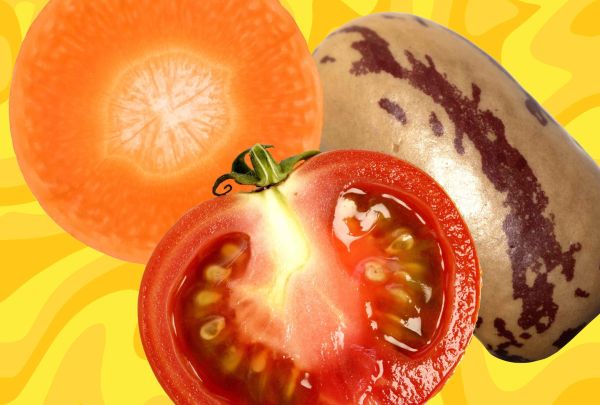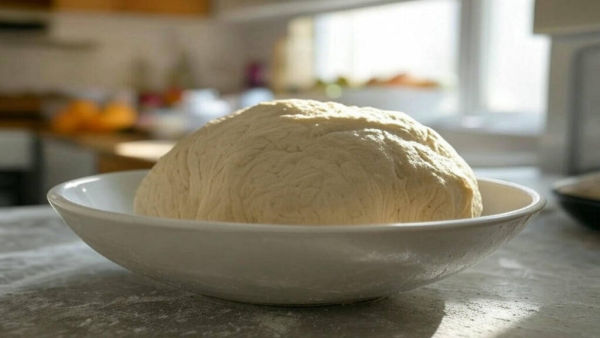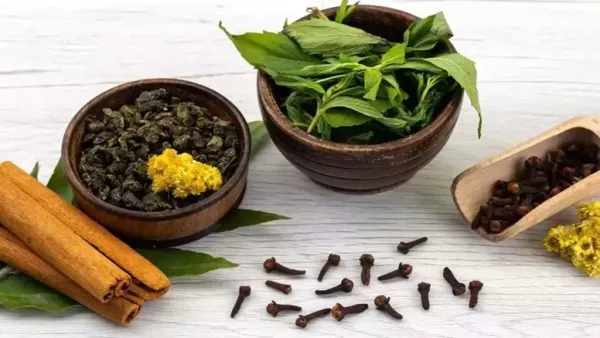

Spoiler alert: This nutrient has the opposite effect of sodium. Any guesses?
Reviewed by Dietitian Kelli McGrane, M.S., RD
Getty Images. EatingWell design.
When it comes to maintaining healthy blood pressure through diet, sodium often hogs the spotlight. However, potassium is arguably just as important. In fact, research suggests that diets that are higher in potassium and lower in sodium can help lower blood pressure levels. We spoke with a medical doctor and two registered dietitians to understand why potassium is the #1 nutrient to help reduce blood pressure.
Why Potassium is The #1 Nutrient to Lower Blood Pressure
Helps Maintain Fluid Balance
Potassium and sodium work together to maintain fluid balance in the body, which affects blood pressure. When the body is properly hydrated and these nutrients are consumed in adequate amounts, fluid levels remain balanced. However, problems arise when there’s an imbalance of sodium and potassium. “When your body has more sodium than potassium, it increases your blood volume, causing more pressure on your blood vessels,” explains Melanie Betz, MS, RD, CSR, FAND.
Important for Kidney Function
According to Srihari S. Naidu, MD, FSCAI and Michelle Routhenstein, MS, RD, CDE, CDNanother way potassium helps lower blood pressure is by increasing the excretion of sodium by the kidneys. Not only is this important for lowering blood pressure, but it may also help reduce kidney damage. Over time, consistently high blood pressure can damage the blood vessels in and around the kidneys, making it harder for the kidneys to function properly. One of the functions impacted is the kidneys’ ability to remove excess sodium, making blood pressure more challenging to control.
Relaxes Muscles Around Blood Vessels
Potassium helps the smooth muscle cells in blood vessel walls relax, which eases tension and lowers resistance within the arteries. This relaxation allows blood to flow more freely, resulting in reduced blood pressure. Additionally, potassium helps keep blood vessels open by inhibiting angiotensin—a hormone produced in the liver and metabolized by the kidneys—that causes blood vessels to tighten.
How Much Potassium Do You Need?
Healthy adults are recommended to consume 3,400 mg per day of potassium for men and 2,600 mg per day for women. For folks with high blood pressure, the American Heart Association recommends bumping intake up to 3,500 mg to 5,00 mg per day.
Despite the benefits of eating potassium, Naidu cautions that high potassium intake can be dangerous for certain folks, including some older adults, those with kidney disease and people on medications that can increase blood potassium levels. According to Naidu, high levels of potassium can also cause arrhythmias, where the heart’s rhythm is out of sync. Before increasing your potassium intake, Naidu recommends talking with a healthcare professional for personalized advice.
Potassium-Rich Foods
When it comes to potassium-rich foods, bananas likely come to mind first. However, you may be surprised by just how many foods contain potassium. And this is good news as Betz and Routhenstein recommend meeting your potassium needs by eating a wide variety of foods. Here are a few examples of foods that are high or good sources of potassium:
- Bananas and plantains
- Leafy greens, including beet greens and spinach
- White and sweet potatoes
- Winter squash, including acorn, butternut and pumpkins
- Carrots and parsnips
- Beans, including lima and pinto
- Tomatoes
Other Strategies to Help Lower Blood Pressure
Eating a potassium-rich diet is just one piece of the puzzle for better blood pressure Here are additional strategies to help lower your levels:
- Try the DASH diet: Routhenstein recommends considering the Dietary Approaches to Stop Hypertension (DASH) diet—an eating plan specifically designed to help lower blood pressure by limiting sodium intake and encouraging foods containing potassium, magnesium and calcium.
- Get Active: According to Naidu, regular physical activity can help lower blood pressure and support overall heart health. For optimal health, it’s recommended to aim for 150 minutes of cardiovascular exercise per week and at least two strength-training sessions.
- Manage Stress: Stress hormones—like cortisol—can cause your blood pressure to rise, especially during times of prolonged or chronic stress. To help lower cortisol levels—and blood pressure—find a few stress management techniques you can do regularly, such as journaling, yoga, meditation or going for a walk outside.
- Limit Alcohol and Avoid Smoking: Alcohol can elevate the hormone renin, which causes blood vessels to constrict and blood pressure levels to rise. If you choose to drink, do so in moderation: no more than 1 drink per day for women or 2 drinks per day for men. Smoking is another major risk factor as it can cause your blood vessels to narrow and restrict blood flow. Avoid smoking (if you haven’t started), or talk to your healthcare provider about ways to quit.
Our Expert Take
Often overlooked, potassium is essential for healthy blood pressure. It helps maintain fluid balance, supports kidney health and relaxes smooth muscle in blood vessel walls. High potassium intake isn’t safe for everyone—especially those with kidney disease. However, for most healthy adults, it’s recommended to enjoy a variety of potassium-rich foods, such as plantains, lima beans and dark leafy greens. In addition to enjoying more high-potassium foods, making other lifestyle changes, including managing sodium intake, following the DASH diet, staying active, reducing stress, limiting alcohol and avoiding smoking, can go a long way in supporting healthy blood pressure.
-
Sparkling Water Vs Soda Water: Why 99% People Get This Daily Drink Wrong | Lifestyle News

-
‘Mankeeping’ is ruining dating for women who are tired of relationship burnout: ‘I’m not your therapist’

-
The only 10 star hotel in the world, listening to one night fare, will fly your senses! Paradise is not less

-
Never dry bread will be made! Know what the soft-free rotis are made by mixing the flour

-
Powerful Ayurvedic herbs to reduce stress, anxiety and depressed mood
